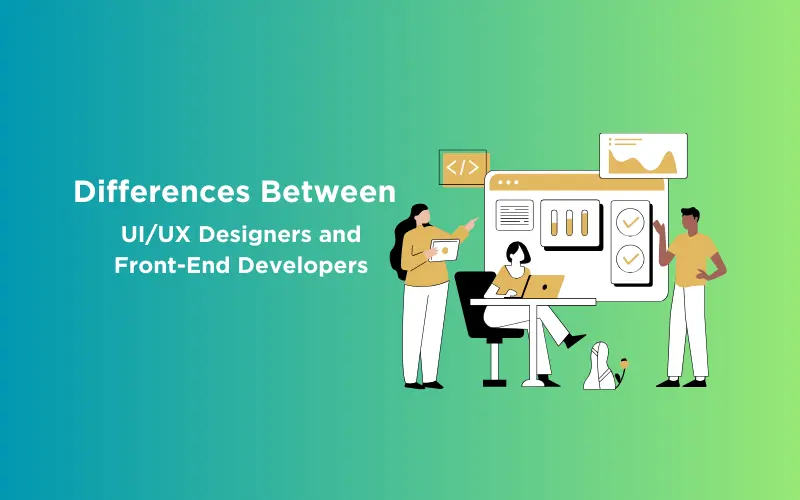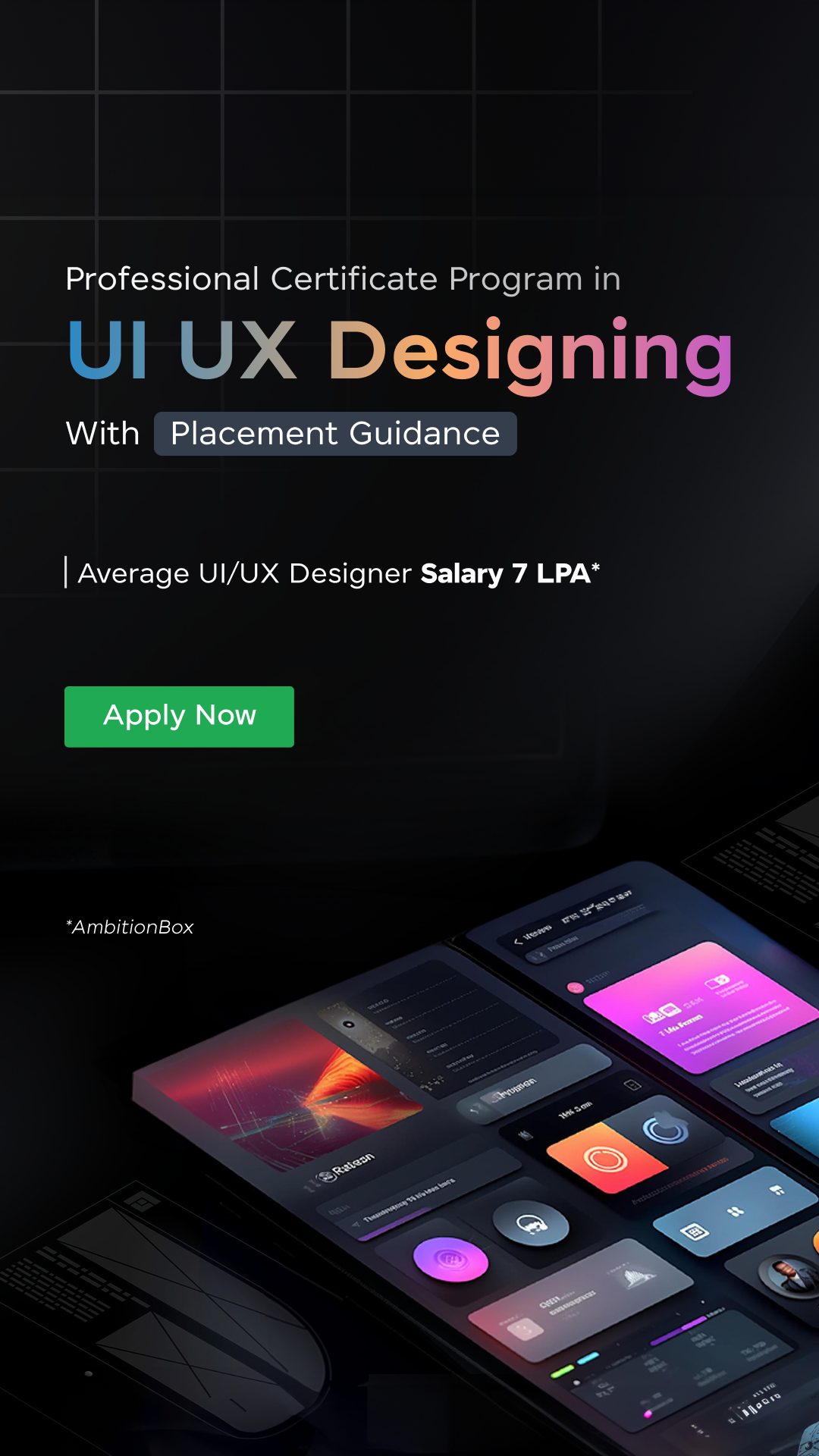
7 Differences Between UI UX Designers and Front-End Developers
Sep 30, 2024 4 Min Read 2808 Views
(Last Updated)
When navigating the path of digital creation, it’s quite a task to list the differences between UI UX designers and front-end developers. They often seem to be walking the same path due to their collaborative roles in crafting digital products, yet they play fundamentally different roles.
This confusion usually stems from their shared goal: enhancing user interaction with websites and apps. But that’s where their common ground ends. Each role has its own set of skills, responsibilities, and objectives.
In this detailed exploration, we will list the differences between UI UX designers and front-end developers, providing clarity to those teetering on the edge of these two dynamic yet distinct professions.
Table of contents
- What is the Role of UI UX Designers
- What is the Role of Front-End Developers
- 7 Differences Between UI UX Designers and Front-End Developers
- Focus Area
- Tools
- Methods
- Skills
- Responsibilities
- Education
- End Products
- Conclusion
- Frequently Asked Questions
- Can a UI/UX designer become a front-end developer?
- What's more in demand: UI/UX designing or front-end development?
- Do UI/UX designers work with front-end developers?
- What is more challenging, UI/UX design or front-end development?
- What should I learn first: UI/UX designing or front-end development?
What is the Role of UI UX Designers

UI UX designers are like architects of the digital world. Their domain is the intersection of aesthetics and functionality. They dive into the psychology of users, creating interfaces that are not only visually stunning but also intuitive.
As we proceed to the next phase, make sure you understand the fundamentals of UI/UX, which includes heuristic analysis, journey maps, testing, etc. If you want to explore more about it, join GUVI’s UI/UX Course with Placement Assistance. You’ll also learn about the tools used in UI/UX which are AdobeXD, Illustrator, Photoshop, Figma, and many more. Build some amazing real-time projects to get hands-on experience.
Think of UI UX designers as artists and psychologists rolled into one, producing designs that resonate with users on a deeper level. Their toolkit is laden with design software like Adobe XD and Sketch, where they breathe life into the initial concepts of a digital project.
Also Read What is UI/UX? Top Things to Know in 2024
What is the Role of Front-End Developers

In contrast, front-end developers are the builders who bring the architect’s vision to life. They are the coding wizards, transforming designs into tangible, interactive web experiences.
Armed with languages like HTML, CSS, and JavaScript, front-end developers ensure that the beauty envisioned by the designer is realized on the screen, with every click and scroll unfolding seamlessly. They are the bridge between static design and dynamic interaction.
Explore More with A Complete Guide to HTML and CSS for Beginners
7 Differences Between UI UX Designers and Front-End Developers
Seven core areas help understand the differences between UI UX designers and front-end developers.
1. Focus Area
| Aspect | UI/UX Designers | Front-End Developers |
| Primary Focus | User Experience (UX) and Visual Design (UI) | Implementing designs into functional web elements |
UI/UX Designers: They dive into the aesthetics and functional aspects of digital products, focusing heavily on user experience and interface design. Their role is to ensure that websites and apps are not only visually appealing but also intuitive and user-friendly.
Front-End Developers: They are responsible for breathing life into the designs created by UI/UX designers. They focus on translating these designs into functional and interactive elements that work seamlessly across different devices and platforms.
UI/UX designers are dedicated to the look and feel of the product, concentrating on the user’s interaction and visual appeal. Front-end developers are tasked with making these designs operational and interactive, ensuring the technical execution aligns with the designed user experience.
2. Tools
| Aspect | UI/UX Designers | Front-End Developers |
| Tools Used | Sketch, Adobe XD, Figma | HTML, CSS, JavaScript, React, Angular, Vue.js |
Understanding the differences between UI UX designers and front-end developers becomes more apparent when considering the tools, they use.
For UI/UX designers, tools such as Sketch, Adobe XD, and Figma are like brushes to a painter – essential for creating the visual aspects of a website or application. These tools enable them to craft the layout, color schemes, typography, and user interfaces that define the product’s visual identity.
Find out the Hottest UI UX Designer Tools of 2023 | Elevate Your Creativity
Front-end developers use the language of coding – HTML, CSS, JavaScript, and various frameworks like React, Angular, and Vue.js – to transform these designs into live, interactive web experiences.
Also Read Most Popular JavaScript Front-End Tools
3. Methods
| Aspect | UI/UX Designers | Front-End Developers |
| Methods Applied | User research, Wireframing, Prototyping | Responsive Design, Cross-Browser Compatibility, Performance Optimization |
UI/UX designers rely heavily on methods like user research and wireframing to ensure their designs are aesthetically pleasing and meet users’ real needs. User research involves gathering insights about the target audience’s preferences, behaviors, and pain points, forming the backbone of user-centric design.
Wireframing, another essential tool in a UI/UX designer’s arsenal, helps lay out the basic structure of a webpage or app before diving into detailed design. It’s a crucial step for visualizing the user journey and planning the user interface effectively.
Front-end developers employ techniques like responsive design to ensure that the website or application functions seamlessly across various devices and screen sizes. Responsive design has been necessary with ever-growing smartphone/tablet users, which involves writing code that adapts to different environments, ensuring that a website’s layout and functionality remain consistent everywhere.
4. Skills
| Aspect | UI/UX Designers | Front-End Developers |
| Design Principles | Deep understanding of layout, color theory, typography | Basic knowledge for implementing designs |
| User Empathy | Ability to empathize with and understand user needs | Understanding of user needs for UI implementation |
| Visual Communication | Proficient in conveying ideas visually through designs | Limited to translating design into functional elements |
| Coding | Basic knowledge of HTML/CSS may be beneficial | Proficient in HTML, CSS, JavaScript, and frameworks |
| Debugging | Basic problem-solving in design | Advanced problem-solving in code functionality |
| UI Implementation | Conceptualizes UI designs | Implements UI designs into functional web elements |
The critical area of differences between UI UX designers and front-end developers lies in the skills each profession demands. While both are integral to creating digital products, these skill sets diverge in focus and application.
The skills of UI UX designers encompass an empathetic approach to user needs, with the ability to communicate visually paramount, as it transforms abstract ideas into clear, engaging, and accessible design elements.
The skills of a front-end developer include coding – the language that brings a UI/UX designer’s vision to life. Skills in HTML, CSS, JavaScript, and various development frameworks are fundamental. But it’s not just about writing code; it’s about debugging, problem-solving, and implementing UI components seamlessly.
5. Responsibilities
The differences between UI UX designers and front-end developers can be showcased as follows:
| Role | Responsibilities |
| UI/UX Designer | – Creating visually appealing and intuitive designs. – Focusing on the product’s interface to make it attractive and user-friendly. – Considering visual and interactive elements for cohesive user experience. |
| Front-End Developer | – Turning designs into functional web interfaces. – Coding visual elements and interactivity. – Ensuring performance across devices and browsers. – Implementing the final product to work smoothly and efficiently. |
6. Education
The common differences between UI UX designers and front-end developers in the area of education include:
| Role | Educational Background |
| UI/UX Designer | Typically from fields like graphic design, web design, or similar creative areas, often supplemented with specialized courses in UI/UX. |
| Front-End Developer | Often from a more technical background, such as computer science or software engineering, and frequently self-taught with a focus on coding skills. |
7. End Products
Finally, the end products both UI UX designers and front-end developers create form the basis of the distinction of their roles.
| Role | End Products |
| UI/UX Designer | Design prototypes and style guides that visually and functionally guide the product’s development. |
| Front-End Developer | Functional web interfaces that users directly interact with, ensuring the site’s technical aspects work seamlessly. |
Conclusion
Choosing between a career as a UI UX designer and a front-end developer depends mainly on your interests and skills.
If you’re drawn to visual creativity and user psychology, UI/UX design might be your calling. If you’re fascinated by coding and making designs, that come alive on the screen, front-end development is likely your path.
Both roles are integral to creating outstanding digital products, and understanding their differences is critical to making an informed decision for your career or project needs.
If you find this article helpful, also read our guide on choosing between UI and UX as a career choice.
Frequently Asked Questions
Can a UI/UX designer become a front-end developer?
Yes, a UI/UX designer can transition to front-end development with training in coding languages like HTML, CSS, and JavaScript and an understanding of front-end frameworks.
What’s more in demand: UI/UX designing or front-end development?
Both professions are in high demand, but the need may vary depending on the industry and specific project requirements.
Do UI/UX designers work with front-end developers?
Yes, UI/UX designers often work closely with front-end developers to ensure the design translates well into a functional product.
What is more challenging, UI/UX design or front-end development?
Both have challenges; UI/UX design is creatively challenging, while front-end development is technically challenging.
What should I learn first: UI/UX designing or front-end development?
It depends on your interests; start with UI/UX design for a design-focused career or front-end development for a coding-focused career.









![What Does a UI/UX Designer Do? [Career Guide] 5 UI/UX](https://www.guvi.io/blog/wp-content/uploads/2023/12/What-Does-a-UI_UX-Designer-Do_.png)

![10 Best Figma Project Ideas [With Source Code] 7 Best Figma Project Ideas](https://www.guvi.io/blog/wp-content/uploads/2024/10/Best-Figma-Project-Ideas.webp)





Did you enjoy this article?